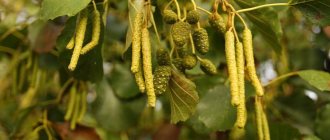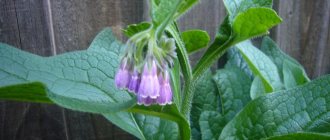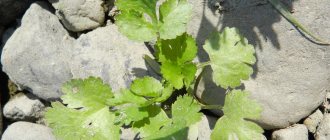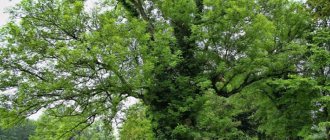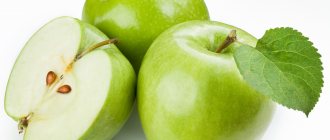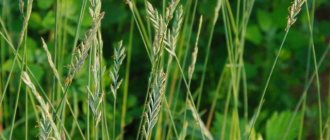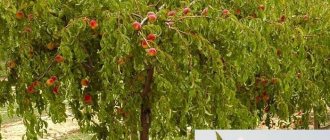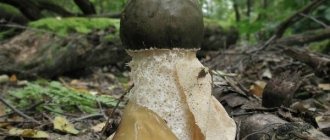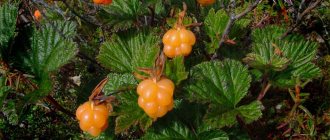Origin of the name of the tree
Vladimir Dal believes that the name of the tree comes from the word “clear” (light). He explains this by saying that the crown of the tree is quite sparse, the branches are sparse and a lot of sunlight passes through the foliage.
Fraxinus (the scientific name of the tree) is translated from Latin as spear. Most likely, the plant received this name because of the shape of the leaves, thin and pointed at the end.
Description of the tree
Ash is a fast-growing deciduous tree of the Olive family. The height of the crop reaches 30 m. In nature, there are individual specimens from 40 to 60 m, growing in the southern regions.
The structure of culture
The crown is light, wide, rounded. The branches are sparse, thick, gray or gray-green in color, directed upward. The buds are black, without shine, with short hairs, rarely light brown. The apical buds are larger in size than the lateral ones. The bark is smooth, ashen with a gray tint. Mature trees have deep, narrow cracks. The trunk is cylindrical with a diameter of up to 1 m.
The leaves are complex and bloom late. The general petiole is pubescent, consists of 7-9 pointed leaves, which are arranged in pairs, opposite each other. The leaf blade has jagged edges, is smooth on top, dark green in color, fleecy underneath, painted in a light green tone. The leaves grow sparsely, so a lot of light enters through the openwork crown.
Flowers and fruits
The flowers of the tree have an unusual structure. In April - early May, red-brown or light purple bunch-shaped panicles with red stamens form on leafless branches. At the same time, growth buds begin to bloom. The flowers have no perianth, and the colorful tufts are odorless.
The fruits are drooping, winged green achenes up to 4.5 cm in length, then turn brown. Ash lionfish are oblong, with a curved wing, collected in clusters of several pieces. The nut is wide, flat, and occupies almost half of the lionfish. Ripens in August. The fruits develop in November.
Ash looks especially attractive in winter. After the leaves fall, the lionfish remain and can survive on the branches throughout the cold months, decorating the leafless tree with luxurious “earrings.”
Where does ash grow?
There are more than 50 species of this tree, but the most common is common ash.
The culture is found almost everywhere, lives for more than 250 years, and retains its growth capacity for up to 74 years. The spreading beauty is often used as an ornamental plant in park art. The tree is planted along alleys, small squares, and in front gardens. Ash can grow on any soil, is light-loving, and can withstand short-term flooding. Rarely forms pure plantings, often adjacent to alder. Grows well in soils rich in calcium. It easily tolerates drought, but in the absence of moisture it begins to dry out. Young plants have a bush-like shape. Representatives of the genus are widespread in mixed and deciduous forests. Sometimes ash trees occupy small areas in dry, shallow ravines and ravines.
Growing
Agricultural technology
It is highly winter-hardy and drought-resistant (excellent), quite resistant to diseases and pests (good), but in some years the leaves are damaged by ash blight, and the trunks and branches are damaged by the small ash beetle. Every year, common ash blooms in late April - early May, bears fruit well, and produces abundant self-sowing (excellent). Light-loving, grows well in moist, fertile soils, but tolerates poor and dry soils. Grows quickly, dust and gas resistant.
Reproduction
The plant reproduces by seeds .
Varieties
Nana
Crown foliage
Ash is easily recognized by its distinctive large leaves. They grow up to 40 cm in length and are composed of 7-15 opposite elements. The length of each is from 4 to 9 cm. They are wedge-shaped with a pointed apex. In the center of the ash leaves (photo below) a vein is clearly visible; from the bottom of the leaf it protrudes as a whitish vein. The stalk has a grooved and semicircular shape.
The leaves appear quite late in the spring, and in the fall the tree often sheds them while still green from the first autumn frosts. If the autumn of the year is mild, then the leaves acquire a beautiful bright yellow color.
Types of ash
Ash is the most numerous and popular species of the Olive family. There are more than 50 species, mostly deciduous trees, but there are varieties in the form of shrubs.
Ordinary
Common or tall ash (Fraxinus excelsior) reaches considerable sizes. There are quite massive samples - 40 m. The bark is colored gray-green, which with age becomes ashen in color and becomes covered with cracks.
From the buds, odd-pinnate leaves of light green color are formed. Snow-white inflorescences appear in early spring before foliage. After flowering, fruits are formed - lionfish, reaching a length of up to 5 cm. The fruits have a light olive color, turn brown and begin to ripen in the fall. They can stay on the shoots all winter.
European countries and Transcaucasia are considered the homeland of high ash. Grows on fertile, slightly alkaline soil. In the southern regions of Russia, ash is grown as an ornamental plant to decorate a personal plot.
Common ash has a high and openwork crown
Pennsylvanian
Pennsylvania ash, or downy ash, grows up to 25 m in height. Young branches are felty and covered with dark brown bark. The leaf blade is imparipinnate, consists of 9 leaves of a dark olive color, which by autumn do not change their color and turn green. The inflorescences are pale green, without aroma.
The species is fast growing, gaining about 50 cm in height and 30 cm in width per year. Lives up to 350 years. Ash grows in fertile soil and a sunny place. Although the variety is frost-resistant, it is not recommended to grow it in the northern regions.
The plant prefers moisture and therefore needs regular watering.
Manchurian
As you can easily guess from the name, this species came to our country from Manchuria, China, Japan and Korea. Grows in forests, on nutritious soil, next to Japanese elm and Maksimovich poplar. The centenarian grows up to 350 years.
The tree is dioecious and when flowering is covered with flowers of different sexes. The variety has an erect trunk, from which the branches diverge obliquely. It reaches a height of up to 35 m, and a diameter of up to 15 m.
Manchurian ash has a specific shape and type of leaf
The bark is brown or ash-colored and has small cracks and longitudinal ribs up to 5 cm thick. Flowering begins in May and continues until September. In place of flowers, fruits appear - lionfish, which last until spring. At the ripening stage they are olive-colored.
Flat lionfish acquire a brown tint towards the end of ripening
Chinese
Chinese ash, or ailanthus, is a light-loving palm-shaped plant native to Northern China. It grows throughout Russia and is widely used for landscaping populated areas. The trunk is gray-brown in color with a furrowed structure of thin bark. The leaves are large, very similar to palm trees, reaching a length of up to 60 cm. Yellow-green flowers are collected in large panicle inflorescences. Flowering begins in mid-summer. After the flowers, small red-brown fruits are formed, which stand out against the background of olive foliage.
Ash flowers emit a not entirely pleasant aroma
This type of ash is fast-growing; by the age of five years the tree reaches 5 m. Chinese ash, or the tree of the Gods, loves a lot of light and warmth. At a young age, the plant is not frost-resistant, but the frozen crown is well restored due to the rapid growth of young shoots. Thanks to its powerful roots, the plant can grow in an open, windy area.
In medicine, due to the rich chemical composition, leaves, bark, flowers and fruits are used. Fresh bark treats dysentery, flowers and foliage treat scarlet fever and diphtheria, and the fruits are prescribed for diseases of the genitourinary system. The leaves have antiviral and antimicrobial properties. The leaves are used to make decoctions that are taken to treat fever.
The bark and leaves have irritating properties; when collecting raw materials, a pustular or blistering rash may appear.
Chinese ash is unpretentious to grow and grows well in moist loamy soil.
All types of ash are smoke and gas resistant, do not tolerate pruning well, grow quickly, and reproduce by sowing seeds.
Types of ash:
| American Ash / Fraxinus americana American ash grows in eastern North America. In deciduous forests on deep, rich, moist, well-drained soils near watercourses and on the slopes of hills and mountains, up to 1050 m above sea level. seas. American ash is a powerful tree, up to 35 m high, with a broadly ovate crown, bare young shoots and light brown buds. The leaves of the plant are compound, odd-pinnate, of 7 (5-9) leaflets, ovate, entire or serrated, glabrous, dark green above, glaucous below, up to 12 cm long. | American ash |
American ash grows quickly, is relatively drought-resistant and more frost-resistant than common ash, and is not damaged by spring frosts, since the buds bloom 8-10 days later than other ash trees. American ash tolerates city conditions well and is durable. Propagated by sowing stratified seeds. Thanks to its fast growth, beautiful openwork crown and durability, it is a valuable plant for alley, group and composition plantings. In culture since 1874.
American ash has several decorative forms: - white-edged; - pointed - with entire-edged leaves, with a pointed apex, dark green above, shiny, below - bright gray, bare; - red-fruited - with a very impressive red coloring of the fruits; - nut-leaved - with less shiny leaves than the typical form, wider and pubescent below.
| White Ash / Fraxinus ornus White ash, or as it is also called, flower ash, is common in the European part of Russia, the Middle East, and Western Europe. White ash is a tree up to 12 m high, with a regular, round, dense crown. The leaves are light green, consisting of 7 oblong-ovate, irregularly toothed leaflets up to 9 cm long, pubescent below along the midrib. It differs from other species of the genus in its white, fragrant flowers, with long, narrow petals, collected at the ends of the shoots into lush, dense panicles up to 15 cm long. During flowering, which lasts 7-10 days, it is very decorative. | White ash |
White ash is characterized by great light tolerance and drought resistance. It grows relatively slowly. Not frost-resistant enough. Recommended for single, group and alley plantings in the south of Russia. In culture before 1700.
White ash grows from late April-early May to early October. In the first 3 years the growth rate is average. Doesn't bloom. The tree's winter hardiness is low.
White ash has a number of decorative forms: - nut-leaved; - narrow-leaved; - round-leaved.
| Lanceolate Ash / Fraxinus lanceolata Lanceolate ash, or as it is also called green ash, is found naturally in the eastern part of North America. Distributed in deciduous forests (sometimes forming pure stands), along the banks of watercourses, and on damp hills. Lanceolate ash is very decorative with a slender trunk, compact crown and shiny, dark green leaves, pale green below. Lanceolate ash grows up to 15 m in height. It is distinguished by fairly fast growth and high drought resistance. Less demanding on soil than other species, more stable in urban environments. | Ash lanceolate |
Lanceolate ash grows from late April-early May to mid-October. At a young age it grows quickly. Blooms in the first half of May, 7-8 days. It bears fruit from the age of 7, annually, abundantly, the fruits ripen in September. Winter hardiness is high. Seed viability is 90%.
Lanceolate ash is often mistakenly called American ash, confused with Pennsylvania ash, from which it differs in the size and shape of its fruits and a number of other morphological characteristics. This type of ash deserves the widest use in landscape gardening construction in cities in the forest, forest-steppe and steppe zones of Russia.
| Common ash / Fraxinus excelsio Common ash is widespread in the European part of Russia, in the forests of the mountainous Crimea and the Caucasus, throughout Western Europe, in the Mediterranean and Asia Minor. Available in many nature reserves. In deciduous forests on fertile carbonate soils, light-loving mesophyte. Common ash is the most famous representative of the genus. Tree up to 30 m tall, with a broadly oval, openwork crown, with straight, slightly branched branches and odd-pinnate foliage. The trunk bark is initially ash-gray, almost smooth, later with deep, longitudinal and small transverse cracks. Young shoots are bare, greenish-gray. The buds are black with velvety pubescence, very impressive against the background of bare branches. | Common ash |
The leaves are imparipinnate, of 7-9 sessile, broadly lanceolate, serrate along the edge, with bright green leaflets above, green below, hairy along the veins. Flowers without perianth, inconspicuous. The fruits are lionfish, up to 5 cm long, often stored on the branches all winter.
Common ash grows quickly and is photophilous. In adulthood, it tolerates temperatures down to -40°C. In harsh winters, some of the shoots may freeze, so it is better to plant it in protected places. It also suffers from late spring frosts, but then quickly recovers. It tolerates air dryness well, but worse tolerates soil dryness. It is demanding on soil and is not sufficiently smoke and gas resistant. It is propagated by seeds, which germinate without stratification only in the second year. Decorative forms are propagated by grafting onto the main species. Lives up to 300 years.
Common ash is a valuable tree for green building due to its fast growth, powerful size, slender trunk and openwork crown. Looks good in alley plantings, complex compositions, and road lining.
Common ash has many forms used in landscape gardening. The most interesting of them are the following: monumental (f. monumentalise - very impressive, strong growth, with a pyramidal crown; - low - slow-growing, with a compact spherical crown; - weeping - a tree up to 8 m tall, with a dome-shaped crown and long branches hanging down to earth, very impressive in a single planting; - horizontal - with horizontally spread main branches, a wide, flat crown and weeping branches; - curly - with small, curly, dark green leaves; - finely cut - with very narrow, slightly jagged leaves; - variegated - a large tree with simple, single or partly trifoliate leaves, looks very unique when planted alone; - yellow-leaved - with yellow leaves; - golden - with yellow shoots and smaller leaves; - golden - variegated; - golden weeping; - silvery variegated; - variegated - on young shoots the bark has pink and white stripes, which greatly decorate the tree in a leafless state.
The forms are used in single and group planting in the foreground.
| Downy Ash / Fraxinus pubescens Downy ash, or as it is also called Pennsylvania ash, is the most widespread in the nature of North America, where it grows along river banks and on floodplains. Fluffy ash is a tree growing up to 20 m in height. A free-growing tree has a spreading, irregularly shaped crown. Shoots with felt pubescence, brownish-brown. Leaves of 5-9 leaflets, matte green above, grayish-green below. Inconspicuous flowers in bunches. Lionfish are narrow, up to 6 cm long. | Fluffy ash |
Downy ash is less demanding on soil fertility than common ash, but more demanding on soil moisture. Tolerates temporary flooding and slight salinity. The most frost-resistant of the species of this genus. It tolerates urban conditions better than common ash. These qualities make it possible to widely use it in landscaping the central and northern regions of the European part of Russia. At a young age in the northern regions it suffers from frost and has a bush-like shape. Gives good shade. Used for street plantings. In culture since 1783.
Fluffy ash grows from late April-early May to mid-October. Grows quickly when young. Blooms in the first half of May, 7-8 days. It bears fruit from the age of 7, annually, abundantly, the fruits ripen in September. Winter hardiness is high.
| Narrow-leaved ash / Fraxinus angustifolia Angustifolia ash is a tree growing up to 30 m in height. Distributed in the European part of Russia, the Caucasus, the Middle East, and Western Europe. Available in a number of nature reserves in the Crimea and the Caucasus. In oak forests up to 1800 above sea level. seas. Photophilous xeromesophyte. Narrow-leaved ash grows from mid-May to mid-September. In the first 3 years the growth rate is average. Doesn't bloom. Winter hardiness is low. | Ash angustifolia |
| Biltmorean Ash / Fraxinus biltmoreana Biltmorean ash is common in the eastern regions of North America, in rich, moist forests. Biltmorean ash is a medium-length tree about 15 m tall. Biltmore ash grows from mid-May to early October. At a young age it grows quickly, then growth slows down. Doesn't bloom. The winter hardiness of the plant is average. | Biltmorean Ash |
| Bunge Ash / Fraxinus bungeana Bunge Ash is a small tree up to 5 m tall, growing in the northern regions of China. Bunge ash grows as a multi-stemmed tree, at 21 years old the height is 5 m, the crown diameter is 300 cm, at 35 years it is up to 6.2 m tall. Grows from late April to mid-October. The growth rate is average. It does not bloom annually, in the second ten days of May. The fruits ripen in August. Winter hardiness is average. Does not reproduce vegetatively. Bunge ash is decorative during the flowering period. | Ash Bunge |
Completely hairy ash / Fraxinus holotricha Koehne
Low tree. Eastern Balkans. In GBS since 1949, 9 copies. grown from seeds obtained from the crop. Shrub, up to 7 m tall at 17 years old, crown diameter 300 cm. Grows from mid-May to mid-October. The growth rate is average. Doesn't bloom. Winter hardiness is low.
| Manchurian Ash / Fraxinus mandshurica Manchurian ash is a tall tree 30 m high, trunk diameter 1.0 m. Manchurian ash grows in the Far East and East Asia. Available in many nature reserves of the Far East. Grows in deciduous and coniferous-deciduous forests on rich, well-moistened soils, shade-tolerant mesohygrophyte. Manchurian ash grows from the first half of May to the second half of September for approximately 135 days. In the first 3 years the growth rate is average. It blooms from 19 years old, in the first half of May. Bears fruit. There are plants that reproduce GBS. Winter hardiness is high. 50% of the cuttings take root. Decorative. Used in landscaping in Moscow . | Manchurian ash |
Black Ash / Fraxinus nigra
Black ash is a tree 25 m tall. Distributed in eastern North America. It grows in mixed plantings in swamps, the banks of lakes and streams. Tolerates slight stagnation of water. Rarely forms pure stands. In GBS since 1966, 3 samples (12 copies) were grown from seeds obtained from the crop. Tree, height 1.9 m at 5 years old. Grows from early May to early October. Young plants grow faster. Doesn't bloom. Winter hardiness is high.
| Oregon Ash / Fraxinus oregona Oregon ash is native to western North America. Oregon ash is a tall tree, up to 40 m high. It grows in fairly deep, fertile soils, along the banks of rivers and streams. Rarely forms pure stands, more often in a mixture with other species, up to a height of 500 m above sea level. seas. Oregon ash grows from mid-May to mid-late October (before frost). Grows quickly. Doesn't bloom. Winter hardiness is low. | Oregon Ash |
| Ash tree / Fraxinus oxycarpa Acute ash is a tall tree growing up to 30m. Acute ash is common in the Crimea, the Caucasus, the Mediterranean, Asia Minor, and Iran. Acute ash grows from early May to early October. The growth rate of the plant is average. Doesn't bloom. Winter hardiness is low. Decorative as a densely branched shrub with lacy foliage. | Acute ash |
Four-sided ash / Fraxinus quadrangulata
The tetrahedral ash grows in eastern North America. On stony limestones, dry uplands, hillsides and even lowlands, along with other hardwoods. The tetrahedral ash is a tree about 25 meters high, but sometimes 40 meter high specimens are also found. Ash tetrahedral grows from early May to mid-October. At a young age it grows quickly. Doesn't bloom. Winter hardiness is high.
Nose-leaved ash / Fraxinus rhynchophylla
Nose-leaved ash grows in the Far East and East Asia. Available in a number of Far Eastern nature reserves. Nose-leaved ash is a small tree up to 12 m tall, trunk diameter 25-30 cm. Nose-leaved ash grows in cedar-broad-leaved and broad-leaved forests. Photophilous mesoxerophyte. Nosoleaf ash grows from mid-May to mid-November. In the first 3 years the growth rate is average. It blooms in early April for 9 - 10 days. Bears fruit from the age of 13. Winter hardiness is high. Nosoleaf ash is quite decorative and is used for landscaping parks.
| Sogdian Ash / Fraxinus sogdiana Sogdian ash grows in Kazakhstan, Central Asia and the Middle East. Sogdian ash is a tree growing up to 25 m in height. Available in the Nurata Nature Reserve. In deciduous forests at an altitude of 1000-1700 m above sea level. seas. Light-loving hygromesophyte. Sogdian ash at the age of 25 years has a height of about 4 m, crown diameter 2.5 m. The plant grows from mid-May to mid-October. Grows quickly. It bears fruit from the age of 11, the fruits ripen in September. The winter hardiness of the tree is average. Sogdian ash is decorative and is propagated for landscaping in parks. | Sogdian ash |
| Syrian ash / Fraxinus syriaca Felt Ash / Fraxinus tomentosa Tree 40 m tall. East of North America. Through swamps and damp forests. In GBS since 1967, 1 sample (3 copies) was grown from seeds obtained from the crop. A low tree or shrub, height 2 m at 20 years, crown diameter up to 170 cm. Grows from early May to early October. The growth rate of young plants is slow to average. Winter hardiness is low. | Syrian ash |
Bare velvet ash / Fraxinus velutina
Velvet ash is common in Western North America and is a tree about 15m high. It grows along the banks of watercourses and in damp places, usually in canyons up to 2000 m above sea level. the sea, together with poplars and pines, sometimes forms pure stands. Velvet ash at 35 years old has a height of 3.5 m, crown diameter 180 cm. It grows from early May to mid-late October. The growth rate of young plants is average or slow. Doesn't bloom. Winter hardiness is low.
Decorative configurations
Let's take a look at its decorative counterparts. Quite often they are used in landscape design.
There are several types:
- monumental, its crown has a pyramidal shape;
- low, its crown is round, ordinary, of small size, growth rate is slow;
- weeping, the branches are long, hanging down to the ground, the crown is dome-shaped, the height can reach about 8 meters.
The wood has a very beautiful texture, its core is dark, but there is a light shade on top. In density and strength it is very similar to oak bark.
Ash
Ash wood, which has medium density, belongs to the heavy and hard varieties of wood. It has high elasticity, wear resistance and toughness. Surface treatment is quite easy and is perfectly impregnated with stains. This material is not resistant enough to the external environment and quickly deteriorates upon contact with the ground.
Ash is used both in the form of solid wood and in the form of plywood or veneer, for example, for the manufacture of kitchen and bedroom sets, as well as other furniture. Widely used as coatings for walls and ceilings, in the production of parquet and floorboards.
Ash boards have high flexibility and strength compared to other species. Therefore, bent shapes for chairs and armchairs are made from this material. The high wear resistance of edged ash boards allows them to be widely used in a variety of construction and manufacturing sectors. Ash edged boards are capable of excellent heat conduction, unlike, for example, pine.
Furniture made from ash has a very beautiful yellowish or pinkish tint, depending on the area of origin of the material. Your room or living room will take on new shades of color if you decorate it with ash furniture, which perfectly reflects sunlight. Furniture made from ash will add comfort and coziness to your home, because no other material can compare with natural wood.
Solid ash parquet boards are characterized by excellent strength properties. This material has an attractive texture and color and, importantly, is resistant to deformation.
Areas of application of ash
Less beautiful wood species and plywood are finished with veneer made from ash wood and its roots. Ash wood has high impact strength, bends well (especially sapwood parts), does not produce flakes, and is therefore widely used in the manufacture of sports equipment.
In a number of European countries, ash bark, buds, leaves, and flowers are used as medicinal raw materials. The dried juice called "manna", which is secreted by the ash flower, or manna, is included in the pharmacopoeias of some Western European countries.
Ash is a technical species, and the bark, wood, roots, and leaves of this tree are in demand in industry. Blue, black and brown paints are made from the bark and leaves and used as a tanning agent; Fresh and dry leaves serve as good feed for livestock.
In England, unripe fruits are collected and immediately pickled (in vinegar with pepper and salt). They are served as a spicy seasoning for vegetable and meat dishes instead of capers. In the Caucasus, unripe fruits are pickled in a similar way and used in food as a hot spice. Young green seeds after salting have the taste of pickled walnuts. They are used as a spicy seasoning for appetizers, first and second courses.
Ash wood, which has high physical and mechanical properties, is widely used. It is used to make veneer, bent and carved furniture, cut light aircraft propellers, railings and parquet, body sides, trim, window frames and carriage sofas, some parts of looms, butts and stocks of firearms, hunting and combat bows, sports equipment - skis, tennis rackets, baseball bats, hockey sticks, billiard cues, oars. Beekeepers made fairly capacious hives from the bark of large ash trees.
Since ancient times, strong clamp pliers and axes have been cut out of ash stumps. But strength is not the only advantage of root wood. Artists and sculptors are more attracted by the variegated layering and silkiness of twisted fibers, which form a very beautiful texture. The wood of ash root looks like the wood of an olive tree. It sands well, polishes and paints evenly. Having uprooted the ash stump, wash the roots and saw it into pieces. If the tree was recently cut down, then the roots are debarked and, having covered the ends with lime, they are dried in piles in the air under a canopy.
| Scientific classification | Physical properties | ||
| Domain: | Eukaryotes | Average Density: | 650—690 kg/m³ |
| Kingdom: | Plants | Density limits: | 410—860 kg/m³ |
| Department: | Flowering | Longitudinal shrinkage: | 0,2 % |
| Class: | Dicotyledons | Radial shrinkage: | 5,0 % |
| Order: | Lamiaceae | Tangential shrinkage: | 8,0 % |
| Family: | Olives | Radial swelling: | 0,21 % |
| Genus: | Ash | Tangential swelling: | 0,38 % |
| International scientific name | Bend strength: | 105 N/mm² | |
| Fraxinus L., 1753 | Compressive strength: | 50 N/mm² | |
| Tensile strength: | 130 N/mm² | ||
| Hardness: | according to Brinell along 65 N/mm², across 37-41 N/mm² | ||
| Thermal conductivity: | sycamore 0.16-0.18 W/km Norway maple 0.14 W/km | ||
| Fuel properties | |||
| 4.1 kWh/kg | |||
Species of the genus ash
There are from 53 to 63 types of ash in six sections:
- Fraxinus americana L.—American ash.
- Fraxinus angustifolia Vahl
- Fraxinus anomala Torr. ex S.Watson
- Fraxinus apertisquamifera H.Hara
- Fraxinus baroniana Diels
- Fraxinus berlandieriana DC.
- Fraxinus bornmuelleri Lingelsh.
- Fraxinus × borzae Georgescu & Tutunaru
- Fraxinus bungeana DC. — Ash Bunge
- Fraxinus caroliniana Mill. — Carolina ash
- Fraxinus × cataubiensis Ashe
- Fraxinus chiisanensis Nakai
- Fraxinus chinensis Roxb. — Chinese ash
- Fraxinus cuspidata Torr.
- Fraxinus depauperata (Lingelsh.) Z.Wei
- Fraxinus dimorpha Coss. & Durieu
- Fraxinus dipetala Hook. & Arn.
- Fraxinus dubia (Willd. ex Schult. & Schult.f.) PSGreen & M.Nee
- Fraxinus excelsior L.—Common ash, or tall ash.
- Fraxinus ferruginea Lingelsh.
- Fraxinus floribunda Wall.
- Fraxinus gooddingii Little
- Fraxinus greggii A.Gray - Gregg's Ash
- Fraxinus griffithii CBClarke - Griffith's Ash
- Fraxinus holotricha Koehne
- Fraxinus hookeri Wenz.
- Fraxinus hubeiensis SZQu et al.
- Fraxinus × hybrida Lingelsh.
- Fraxinus insularis Hemsl.
- Fraxinus × josephi Sennen
- Fraxinus lanuginosa Koidz. — Woolly ash
- Fraxinus latifolia Benth.
- Fraxinus longicuspis Siebold & Zucc.
- Fraxinus malacophylla Hemsl.
- Fraxinus mandshurica Rupr. — Manchurian ash
- Fraxinus micrantha Lingelsh.
- Fraxinus nigra Marshall – Black Ash
- Fraxinus odontocalyx Hand.-Mazz. ex E.Peter
- Fraxinus ornus L. - Manna Ash, or Manna Ash, or White Ash
- Fraxinus pallisiae Wilmott
- Fraxinus papillosa Lingelsh.
- Fraxinus parryi Moran
Useful tables
Specific gravity indicators
| specific gravity of freshly cut ash | specific gravity of air-dried ash |
| average 0.92 | average 0.75 |
| limit 0.74-1.14 | limit 0.57-0.94 |
Mechanical properties of ash
| Indicators | Ash Manchurian | Tall ash ( common ) | Pennsylvania ash ( culture ) |
| Tensile strength, MPa | |||
| with static bending | 108 | 118 | 112 |
| when stretched along the fibers | 146 | 140 | 160 |
| when compressed along the fibers | 50,8 | 56,2 | 57 |
| when shearing along a radial plane | 13,0 | 13,4 | 13,7 |
| when digging along a tangential plane | 12,2 | 13,0 | 13,9 |
| Elastic modulus at static bending, GPa | 13,7 | 11,9 | 14,0 |
| Impact strength, kJ/m2 | 61,9 | 88,9 | 163 |
| Hardness, N/mm2 | |||
| end | 65 | 78,3 | 74,7 |
| radial | 54 | 57.1 | 60,2 |
| tangential | 57 | 65,1 | 65,5 |
| shock, J/mm2 | 0.81 | 1,05 | 1,08 |
What does ash look like?
The description of the tree goes something like this:
- It is a deciduous tree twenty-five to thirty-five meters high;
- It has oblong, pointed leaves that are dark green in color;
- The leaves grow quite sparsely, so the sky shines through the crown beautifully. It is because of this arrangement of leaves that it got its name. The name “ash” comes from the word “clear” , because through the openwork sparse crown, consisting of graceful leaves, the sky is clearly visible;
- The fruits are lionfish, reminiscent of maple fruits. Each fruit contains seeds inside.
The spreading beauty is actively used in landscape design . This tree looks beautiful both in winter and summer. The lacy foliage creates light shade, and in the fall its spiky leaves turn vibrant colors. It, along with the birch tree, is one of the symbols of Russia. Seedlings for planting in a summer cottage can be purchased at nurseries. Of course, you can try to grow it from seeds, but this is quite a troublesome task. The seedling will develop much faster; the main thing is to create favorable conditions for it. Recently, many summer residents have been planting ash simply because this tree looks very beautiful.
Ash bark and leaves: use in folk medicine
The leaves of the tree have been used in folk medicine for centuries. A variety of decoctions and infusions are prepared from the dried leaves for internal use. You can use medicinal raw materials from dried leaves separately or as part of herbal preparations. The bark of the tree also has medicinal properties, our ancestors also knew about this from ancient times. Medicinal raw materials from dry leaves and crushed bark are used in the following cases:
- In the treatment of obsessive dry cough;
- For diseases of the musculoskeletal system, for joint pain caused by arthritis, arthrosis, rheumatism;
- In the treatment of cardiovascular diseases;
- In the presence of deep non-healing wounds.
Medicinal raw materials made from leaves and bark effectively relieve inflammation, have an antiseptic effect, promote wound healing and tighten scars.
In occult medicine, it was traditionally believed that decoctions and infusions from the leaves “clarified” consciousness, that is, they enlightened thoughts. On the day of Ivan Kupala, folk healers and sorcerers went at midnight to collect medicinal herbs, and always brought with them, among other herbs and leaves. Livestock was lashed with branches to keep them healthy all year round.
Ash wood: industrial applications
Ash is not only leaves with medicinal properties, but also valuable wood. is considered to be very durable and resistant to external influences . Also, the wood has a beautiful, noble color, so furniture and other household items made from ash do not need painting; it is enough to simply coat them with colorless varnish.
Craftsmen create real miracles from wood. Despite its hardness and resistance to external influences, ash wood is quite elastic , and therefore it is easy to work with, and you do not need to put much effort into it. In Rus', from time immemorial, ash wood was used to make baklushi (blanks for wooden spoons), children's toys and, of course, furniture. It also makes very good, resilient bows and crossbows. Sports equipment is also made from ash wood. Wood is even used in the aviation industry: important parts for aircraft are turned from it on a lathe.
Ash furniture is very popular due to its good quality and affordable price. Window frames are also still made from this wood. Many owners of private apiaries still make houses for bees, because ash wood has bactericidal properties, and the bees living in such houses almost never get sick.
Ash in the folklore of different nations
Since ancient times, ash has been mentioned in folk art among representatives of different countries.
Thus, one Lithuanian pagan legend tells that people once angered the gods with their evil deeds. The gods descended to earth to punish people and decided to hold a joint council to choose punishment. But they could not find a place to sit and confer. Seeing the spreading tree with its openwork crown, the gods immediately sat down in its shade. They sat for a long time. In the end, the gods enjoyed relaxing in the lace shadow so much that they decided not to punish people and retire to heaven again. In ancient Rome and ancient Greece, ash has long been considered the tree of the sea god Neptune (in Greek mythology - Poseidon). Boats, ships and ship gear were often made from ash, as it was believed that a ship made from ash wood would never sink. This belief persisted for a long time in medieval Europe, right up to the era of the Great Geographical Discoveries. It is known that when the mass migration of Europeans to America discovered by Columbus began, the Europeans took with them “for luck” branches, pieces of bark and ash seeds. People sincerely believed that these miraculous talismans would help them sail safely to a distant land. One of the legends of the indigenous people of America, the Indians, tells that once upon a time there were no people or animals on earth, but only water. The bird brought a piece of earth and built a nest on the water, and then a small island appeared from this nest. A large ash tree grew on the island. When it began to bloom and bear fruit, the first people emerged from its seeds - the distant ancestors of modern people.
All these beautiful legends and tales indicate that ash is one of the most beloved trees among the people . They love it for its beauty, for its medicinal properties and for its durable wood, from which you can make anything.
It is certainly worth planting an ash tree in your garden. One look at this tree lifts the mood and reminds a person of how beautiful the nature created by God is. You can look into the gap of lacy ash leaves at the blue sky endlessly, and each time a new picture, unlike the previous one, will open to your gaze.
Also, the leaves, fruits and wood of the ash tree should definitely be shown to the child, and then the child will learn to love the living nature of his native land from childhood. The lacy foliage of an ash tree against the background of a bright blue sky is a real miracle.
Methods of preparation and use
Traditional medicine offers several basic algorithms for processing ash wood and its other parts. You can dry valuable raw materials yourself, or you can buy them ready-made at a pharmacy - the benefits of homemade preparations will be the same.
Infusion
An aqueous infusion is prepared from young ash leaf blades. The product has good anthelmintic and laxative properties, and also relieves pain and inflammation.
The cooking recipe looks like this:
- dry raw materials are crushed in the volume of a large spoon;
- pour a glass of boiling water;
- keep covered in a warm place for 15 minutes;
- filter through a layer of gauze.
We recommend reading: Nettle: beneficial properties, uses, recipes
You need to take the ash infusion three times a day in the amount of a glass.
Ash infusion helps with stomach pain and normalizes metabolic processes
Tincture
An alcoholic tincture is prepared from the wood and fruits of ash - winged seeds. The medicine is made as follows:
- dry raw materials are crushed in a volume of 50 g;
- pour the mixture with 500 ml of alcohol and close the vessel with a lid;
- put in a dark place for two weeks.
The strained tincture of ash wood is used mainly externally - for rubbing and compresses.
Ash tincture on wood and fruits helps with varicose veins, rheumatism and muscle pain
Decoction
For colds, fever and respiratory ailments, traditional medicine recommends the use of common ash and its wood in the form of a decoction. The recipe for preparing the product looks like this:
- two large spoons of crushed bark are poured into 250 ml of boiling water;
- heat over low heat for a quarter of an hour;
- remove from the stove and cool;
- passed through cheesecloth for filtration.
You need to take 2-3 large spoons of ash wood decoction throughout the day. You need to drink at least half a glass of medicine per day.
A decoction of ash wood helps with diarrhea due to its astringent properties.
Where is the best place to plant ash on the site?
Ash is distinguished by its leaves, which, when the crown is formed correctly, create an openwork pattern and luxuriantly cover the branches, so a hedge made from this tree creates a dense barrier from road dust and noise.
With the ability to withstand frosts down to -40, the plant is quite demanding in terms of light and soil composition, so for its planting it is necessary to select areas with good lighting and on fertile soil, which can be additionally fertilized.
Growing Ash
Ash is a tree species that is very sun-loving, so for planting it you should choose places with good access to sunlight. The soil should not contain a lot of salts and should not be too wet. Also, ash trees do not like to be planted too densely, so you should take care of this in advance by planting the trees at a distance of at least 5 meters from each other. Before planting, the tree should be kept in water and then watered regularly for the first 3 days. If the summer is dry, it is advisable to water regularly, otherwise watering twice a day throughout the summer is sufficient.
In order for the tree to grow beautiful and healthy, it is advisable to feed it with various fertilizers and timely treat it against harmful insects. If you follow all these rules, it will grow powerful and tall.
Planting a tree yourself
It is better to plant ash, which cannot tolerate excessive waterlogging of the soil, on hills or first take care of organizing a good drainage system in an area with low groundwater levels.
The future giant reproduces in two ways: vegetatively and generatively, but it is important to remember that choosing a seedling that quickly takes root is much easier than growing seedlings, which can take a lot of time and effort, but not bring the desired result.
Growing from seeds
Knowing what ash looks like, you can collect seeds in the fall and use them for summer planting next year; in the fall, they are planted only under exceptionally favorable weather conditions and in warm climatic areas.
Before planting, the seeds are calibrated and immersed in pre-dug soil to a depth of no more than 5 cm; seedlings should appear at the end of May; they require regular care, for this purpose weeding, watering and loosening the soil are carried out.
Planting seedlings
If it is difficult to obtain ash seeds, it is better to purchase a good seedling with a developed root system in advance; dig a shallow hole for it and, for drainage, place drainage materials on its bottom and fill it with a nutritious soil mixture.
The root system of the seedling cannot be completely immersed in the soil; the root collar should rise 15 cm above the hole; supports must be installed along the edges of the hole to which the planted seedling is attached, which facilitates its rapid rooting.
How many years does an ash tree live?
The average lifespan of a tree is about 100 years. There are long-lived species, their age can reach 350 years. Single specimens that grow in fertile soil and a sunny place “live” the longest. Ash trees growing in dense forests quickly die due to lack of light.
Ash is best grown in a sunny location.
When Ash Blooms
Flowering begins in April-May and lasts until the leaves bloom. Thanks to the large number of flowers and pollen, Ash is an excellent honey plant.
The fruits ripen in September or October and can remain on the branches until early spring, helping small birds from hunger. These fruits contain large amounts of fats and proteins.
The tree begins to bear fruit after an average of 25 years and can live up to 300 years. Ash leaves fall in late autumn, retaining their green color.
Care and disease control
If the place for planting an ash tree is chosen correctly, the tree can grow up to 40 cm in height in the first year. In spring and autumn, ash needs feeding. Both organic and mineral fertilizers are suitable for this.
The tree will only need watering in hot summers. The pest very rarely settles on ash trees. If a bark beetle or ash bark beetle is detected, it is treated with insecticides.
With good care, ash will be an excellent addition to landscape design.
Usage
There is also a lot of information about the amazing properties of ash. Thanks to its unpretentiousness and its rapid growth, ash is a fairly valuable tree for creating parks and alleys, lining roads, and landscaping the city. Even in complex compositions it has an excellent appearance.
Products made from ash were durable and moderately heavy. Many types of weapons were made from it. These included war clubs, stakes with spears, bows, and even spears and arrows. It is not surprising that ancient people considered ash a symbol of war .
But peaceful people also found wide use for it.
It was made from:
- rocker arms;
- sled;
- wheels;
- souvenirs;
- and small crafts.
Dishes made from this material were in great demand, the only decoration of which was the light and shiny texture of the wood itself. And even in shipbuilding, ash boards were known!
Nowadays, the functionality of this tree has expanded significantly:
- facing material;
- gymnastic bars;
- parquet;
- aircraft parts;
- items of sports equipment;
- oars;
- skis;
- tennis rocket;
- turning products and so on.
Car manufacturing, aircraft manufacturing and shipbuilding can hardly do without this valuable wood. Plywood and furniture, tool handles and stair railings are often made from ash.
Its fruits contain fatty oils that are used as food. The people of the Caucasus prepare them unripe with vinegar and salt. as a seasoning with meat or fish. And you can even preserve it by carefully chopping it first.
The seeds can be used to extract a dark green oil that is used to make paint, soap and artificial rubber.
Since the bark contains a lot of tannins, paint from it is usually brown, black or blue.
Chemical composition
Active ingredients
The plant contains cellulose, phenols, coumarins, flavonoids, tannids (5%). The bark contains carbohydrates, including stachyose (30-60%), phenols, alkaloids, coumarins, quercetin (0.7%), and the lipid suberin; in the branches there are coumarins. Mannitol, sucrose, starch, calcium malic acid, ursolic acid, essential oil, saponins, vitamin C, hydroxycoumarins, carotenoids, coumarins, flavonoids, tannins (4.57%) were found in the buds and leaves; in seeds - fatty oil (12%), vitamin B1, protein (10%).
The healing properties of ash
Ash is widely used in folk medicine. The bark of the tree was previously used instead of quinine to expel worms and for fever. If you apply fresh crushed ash bark to the wound, it will heal faster. Previously, ear diseases and rheumatism, dropsy and liver diseases, coughs and snake bites were treated with the help of ash bark and leaves. Information about the use of this tree can be found in the ancient Roman physician Quintus Serenus Samonicus in the 3rd century AD. e.
You now know not only what the tree and ash leaves look like in the photo, but also a lot of interesting things about this wonderful plant.
Recipes for various diseases
A decoction of the leaves and bark is used for liver diseases, urolithiasis, bronchopneumonia, pulmonary tuberculosis, inflammatory kidney diseases, rheumatism, polyarthritis, radiculitis, gout and dysentery, and also as an anthelmintic. To prepare a decoction of bark and leaves, pour 2 tablespoons of crushed raw materials into 1 glass of hot water, boil in a closed enamel container in a water bath for 30 minutes, cool at room temperature for 10 minutes, filter through two or three layers of gauze, squeeze and bring the volume with boiled water to original. Take 1/3 cup 3-4 times a day before meals.
Cough treatment
Collection 1. Preparation of the decoction. 20 g of chopped young sprouts are poured into a glass of boiling water, boiled for 15-20 minutes, cooled, and filtered. Take 1 tablespoon 3 times a day for persistent cough.
Mystical properties of ash
Since ancient times, people have endowed ash with magical properties. In some countries, ash forests were even burned to rid the area of evil spirits.
Among other peoples, ash was endowed with power and strength to decide the destinies of people. So, in Lithuania it was called the tree of the righteous. In the legends of the peoples of the northern countries, the gods gathered under a tree to make important joint decisions. Among the Slavic peoples, ash was a totem tree. Our ancestors protected ash groves. There was a belief that its juice could protect against a viper bite. Both in India and the Caucasus it was called a sacred tree.
Interesting Facts
- Ash in common people has several names: holly, ash, ash. In nature it often grows next to oak trees. By watching the trees, you could find out what kind of summer it would be like. If the oak tree shows its leaves first, it means it will be hot and dry.
- The Greeks used the juice of the plant for snake bites.
- In Rus', the bark of the tree was used as a remedy for malaria and fever.
- In magic, ash personifies good and evil; it has powerful energy.
- Many peoples worshiped the tree. It was called the “tree of knowledge” and was considered a symbol of life and wisdom.
We will be very pleased if the reader discovered new and interesting facts about ash in this article. If something was unclear, you can ask questions in the comments below. Our editors will be happy to answer all readers.
You can find out what ash looks like from the video provided:
Myths about white ash
The beauty of the tree and ash leaves (photo presented in the article) has long been liked by people. In ancient legends you can find myths about the involvement of ash in the appearance of people on Earth. The Scandinavian gods - Odin, Vili and Ve - created a man from ash and a woman from alder. God Odin breathed a soul into them and gave them life, the next god Vili gave them reason and taught them to move, and the last god Ve infused them with 5 senses.
After death, warriors who fell on the battlefield (in the beliefs of the ancient Scandinavians) end up in Odin’s Garden of Eden, where they continue their military work. In the middle of the promised land called Valhalla stands a huge ash tree. A goat that eats its leaves produces a full cup of honey every day instead of milk. And a deer eating its branches has an inexhaustible source of water flowing from its antlers, which flows underground.
Historians believe that ancient beliefs are closely related to the properties of white or semolina ash, which releases sweet sap from its branches when cut.
What does an ash tree look like and where does it grow?
Ash (Fraxinus) is a woody plant from the Olive family with a developed and branched root system. The bark is ash-gray, with small cracks in the lower part of the trunk and smooth on top, the crown is formed by sparse thick branches, and has a wide-round, slightly elongated shape. The photo of a tree and leaves of a growing ash tree shows that its plates are lanceolate, pointed, arranged oppositely and tightly cover one long common petiole.
Ash can rise up to 25-40 m above the ground
The plant blooms in spring in April and May. Tufted panicles of a dark brown or purple hue bloom while still on bare branches. The tree bears both male and female flowers, but they ripen at different times. Therefore, ash pollination occurs due to neighboring plants and beetles that spread pollen. In September and October, fruits appear - lionfish with flat grooved nuts, falling to the ground only in winter or early spring.
Important! With the onset of autumn, the ash tree first sheds individual sessile leaves, and only then the common petiole falls off.
Where does the ash tree grow in Russia?
Ash is not a rare species and is quite widely represented in Russia. You can see it in the Central part and in the Volga region, in the Tver region, in the Black Earth Region, in the Crimea. The tree prefers light, fertile soils with moderate moisture.
Mention of white ash in the Bible
Some historians express the opinion that white ash is related to the biblical legend about manna from heaven, believing that this particular type of ash was the source of manna. This has become the subject of heated debate among various researchers. Many believe that it is because of this that this ash tree received its botanical name.
Sources
- https://sadovnikam.ru/475900a-yasen-foto-dereva-i-listev-opisanie-raznovidnosti-i-interesnyie-faktyi
- https://pion.guru/derevya/yasen
- https://agronom.guru/yasen-foto-dereva-i-listev
- https://kursi-floristiki.ru/recepty/yasen-derevo-foto.html
- https://rostok.guru/derevya/yasen-gde-rastet-i-kak-vyglyadit-foto-i-opisanie.html
- https://vserastenija.ru/yasen-obyknovennyj/
[collapse]
